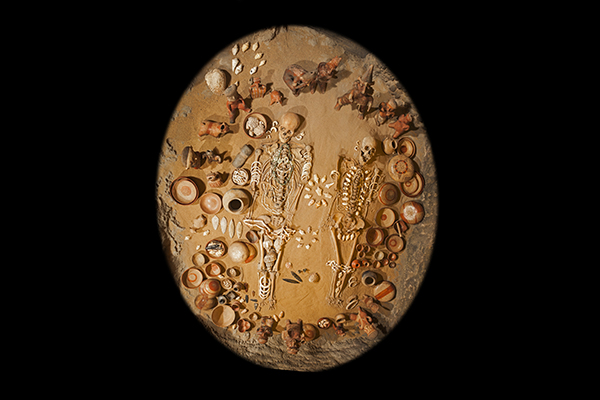
HOME / PUBLICACIONES / Pasajes de Investigación / El interior de una tumba de tiro y cámara

El interior de una tumba de tiro y cámara
The continuity of life after death was evident
in the tradition of shaft tombs and chambers, a practice that began around 800
BC and continued until 650 AD.
These tombs were excavated underground in a substrate composed of volcanic tuff and layers of sandstone that provided the necessary stability for their construction. Stone, wood, and bone implements were used, as well as containers made of fibers and skins for carrying and removing the waste material.
The depth of the vertical shafts varies from one meter to 17 or 22 meters, as seen in the tombs of El Arenal and San Juan de Los Arcos in Jalisco. Having one shaft for one chamber was common, but up to five chambers could be found connected by one to three shafts. The entrance to the chamber was sealed with large stone slabs or metates, and the shaft could be filled with earth and sometimes with offerings.
The shaft tombs with chambers are sacred spaces, reproductions of the underworld, the place where the deceased resided.